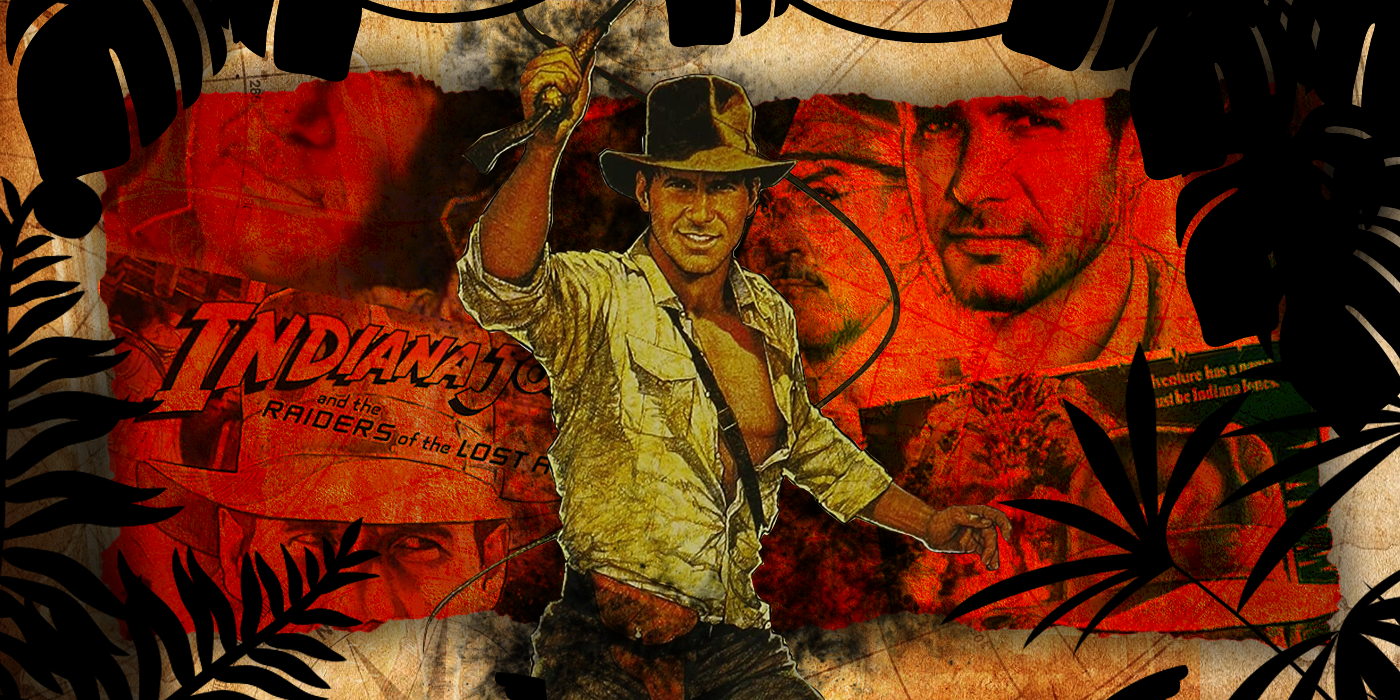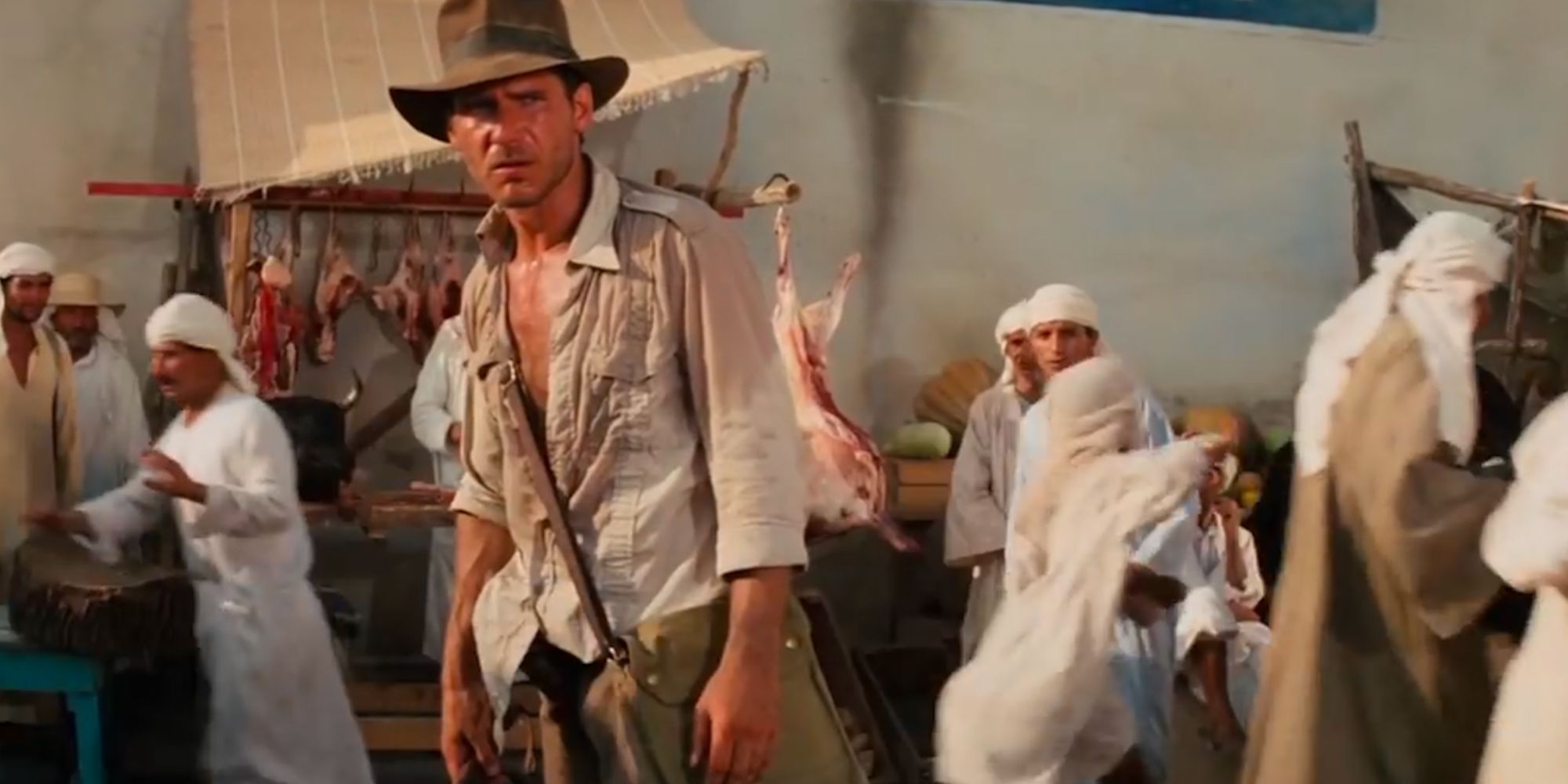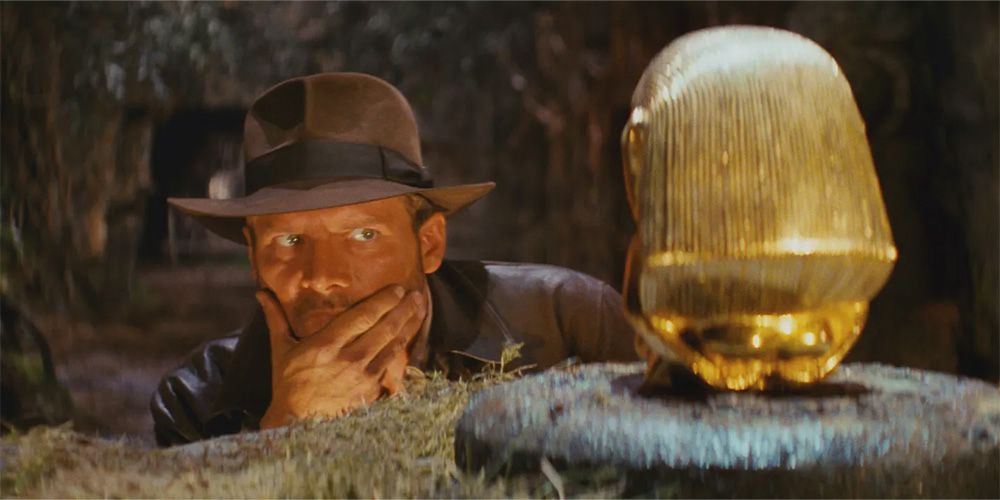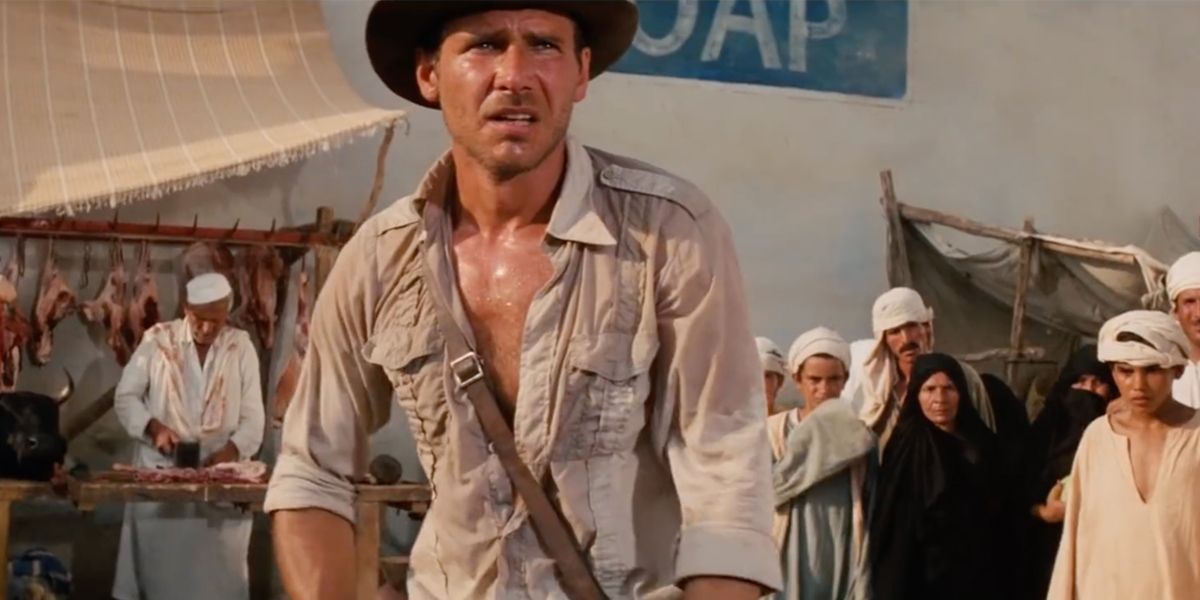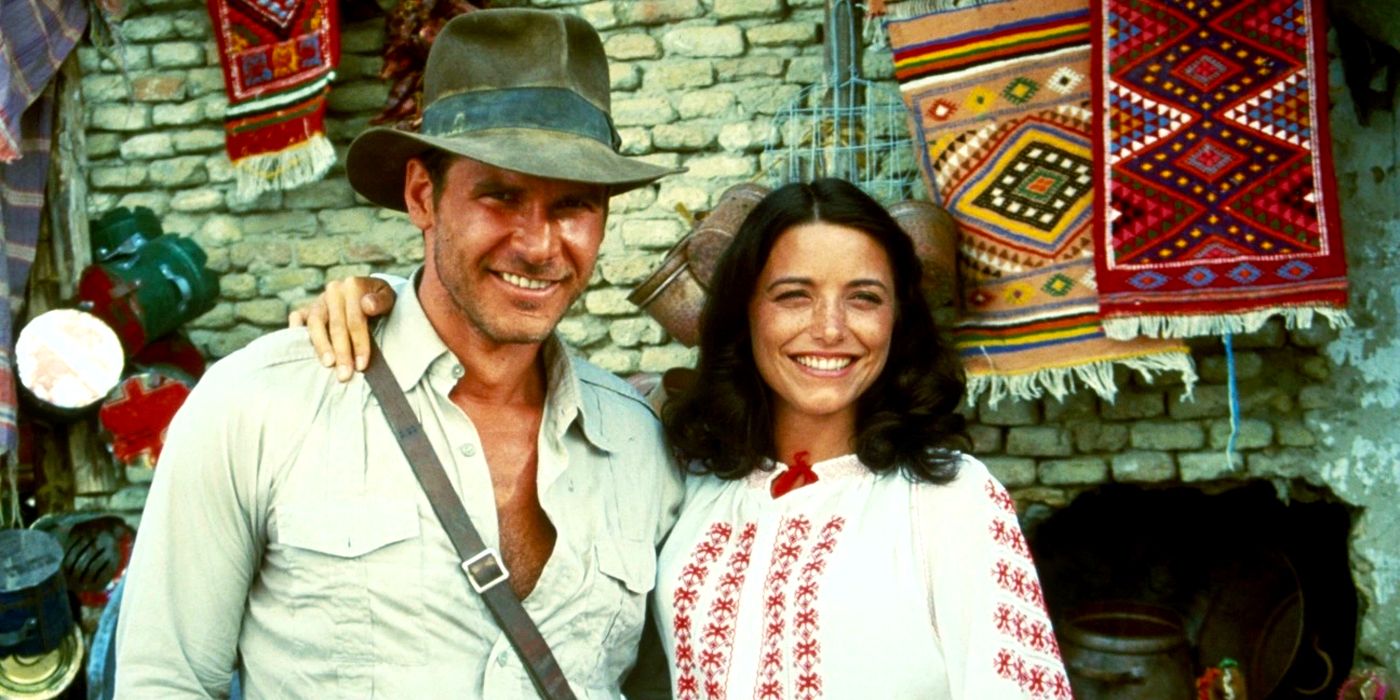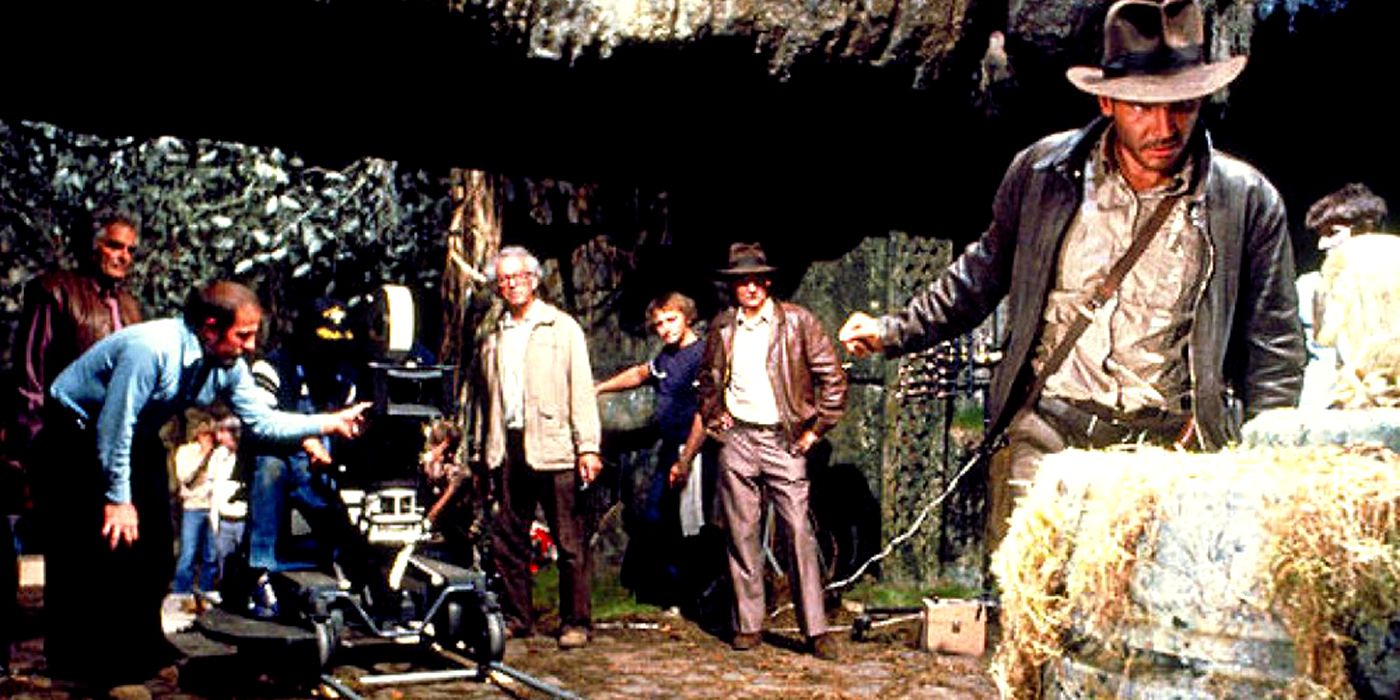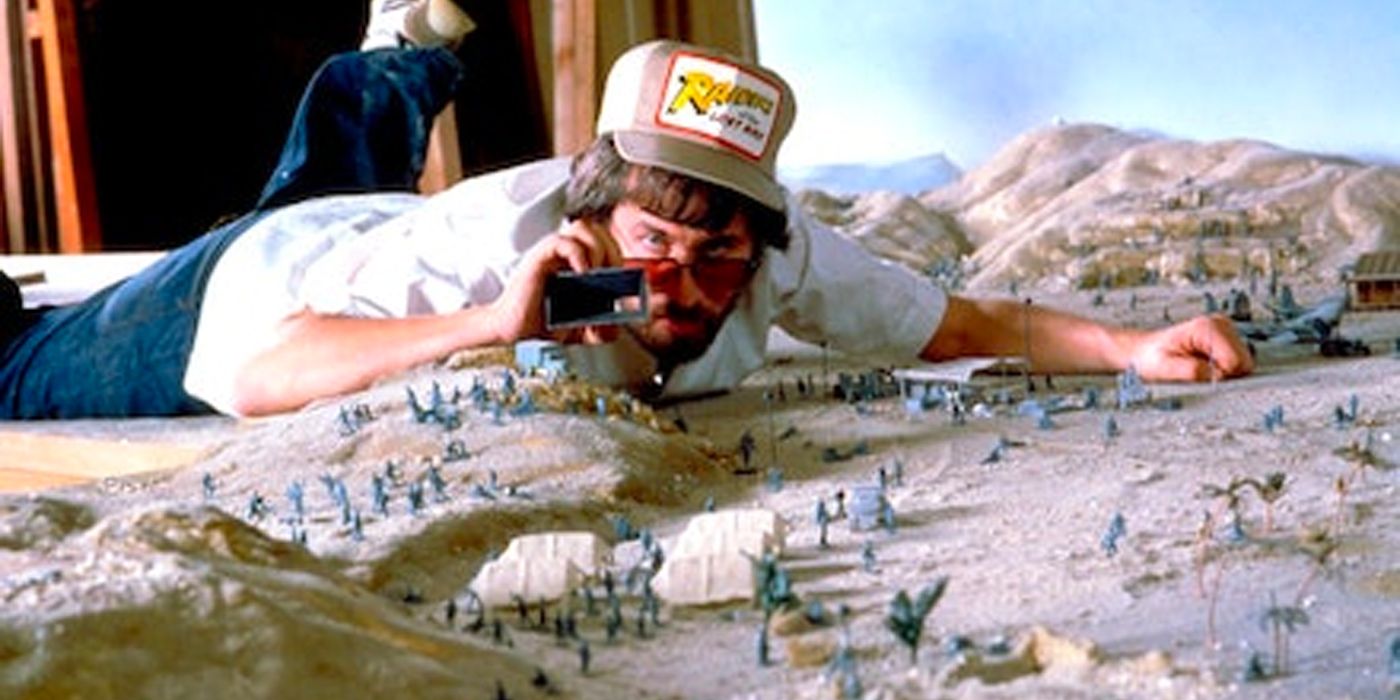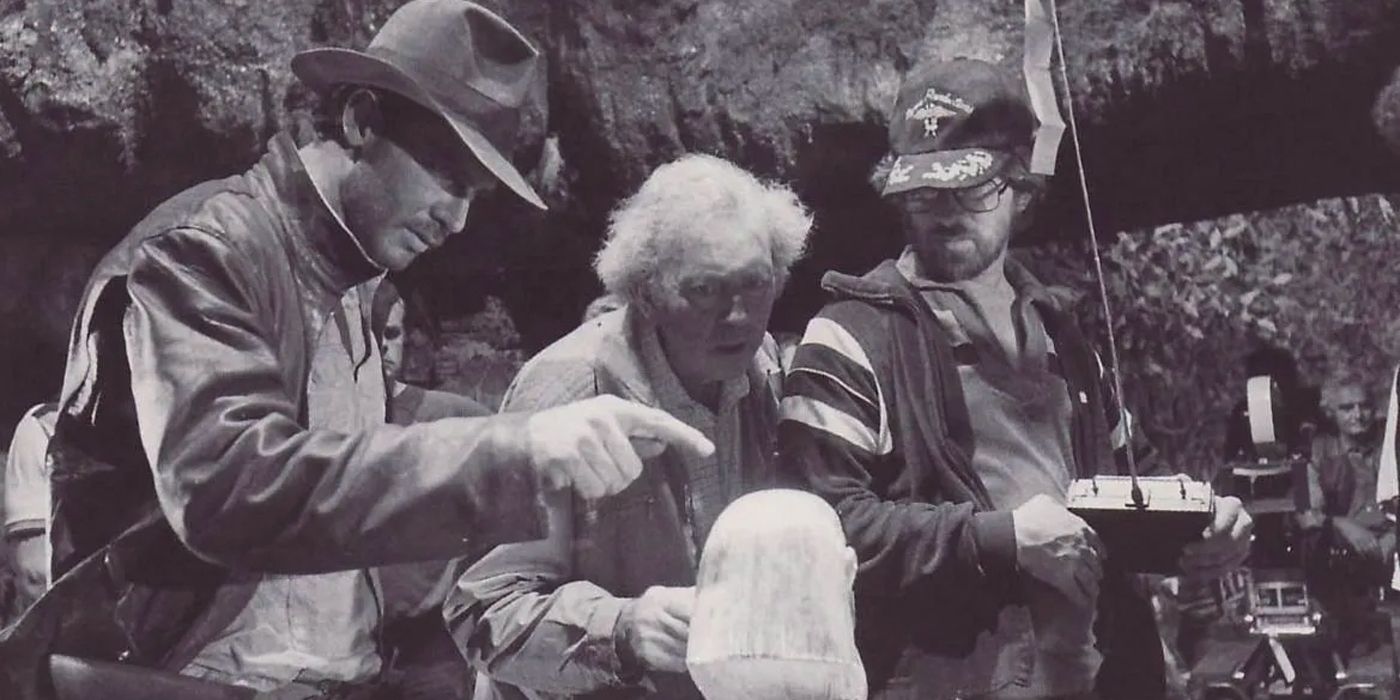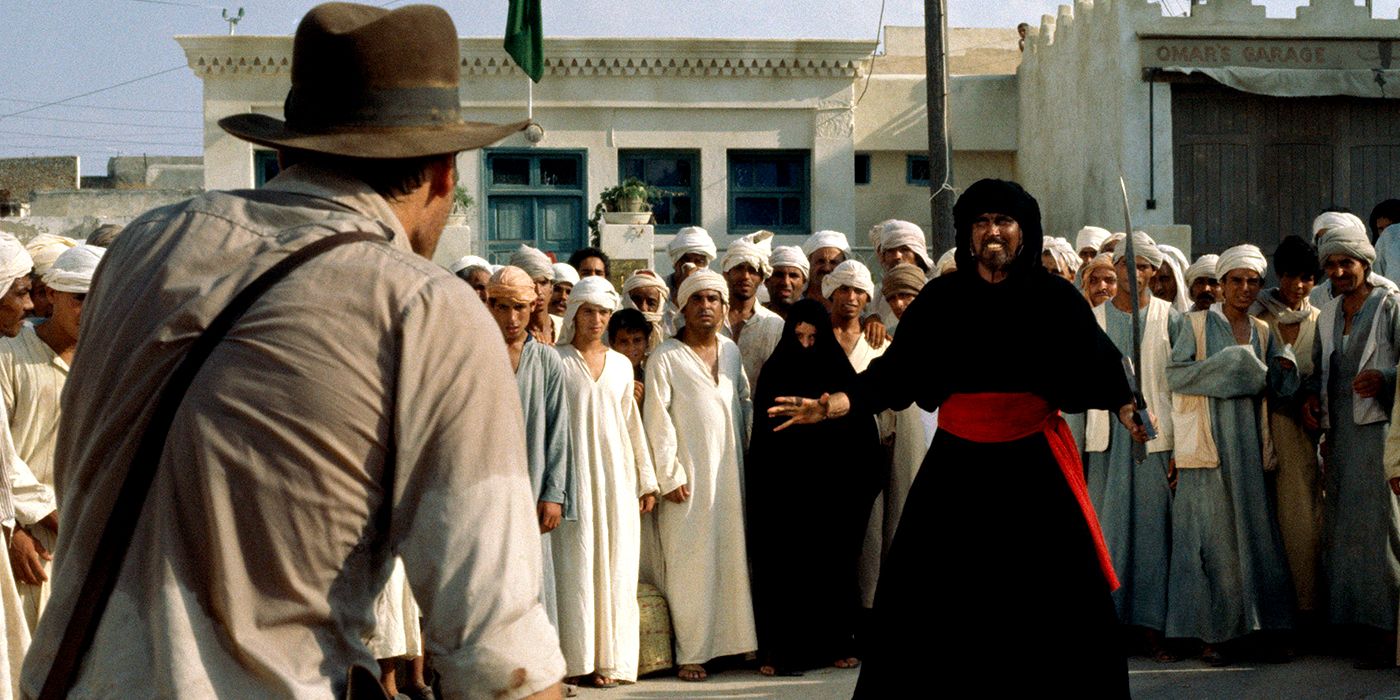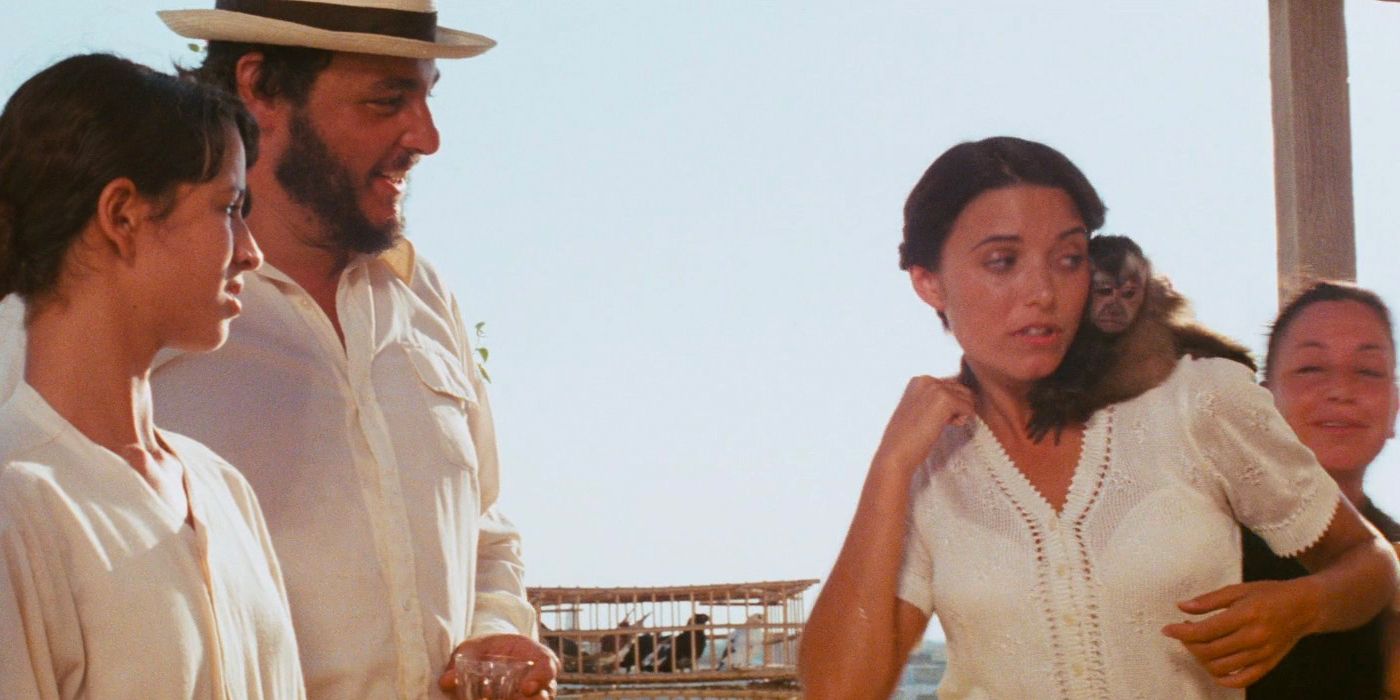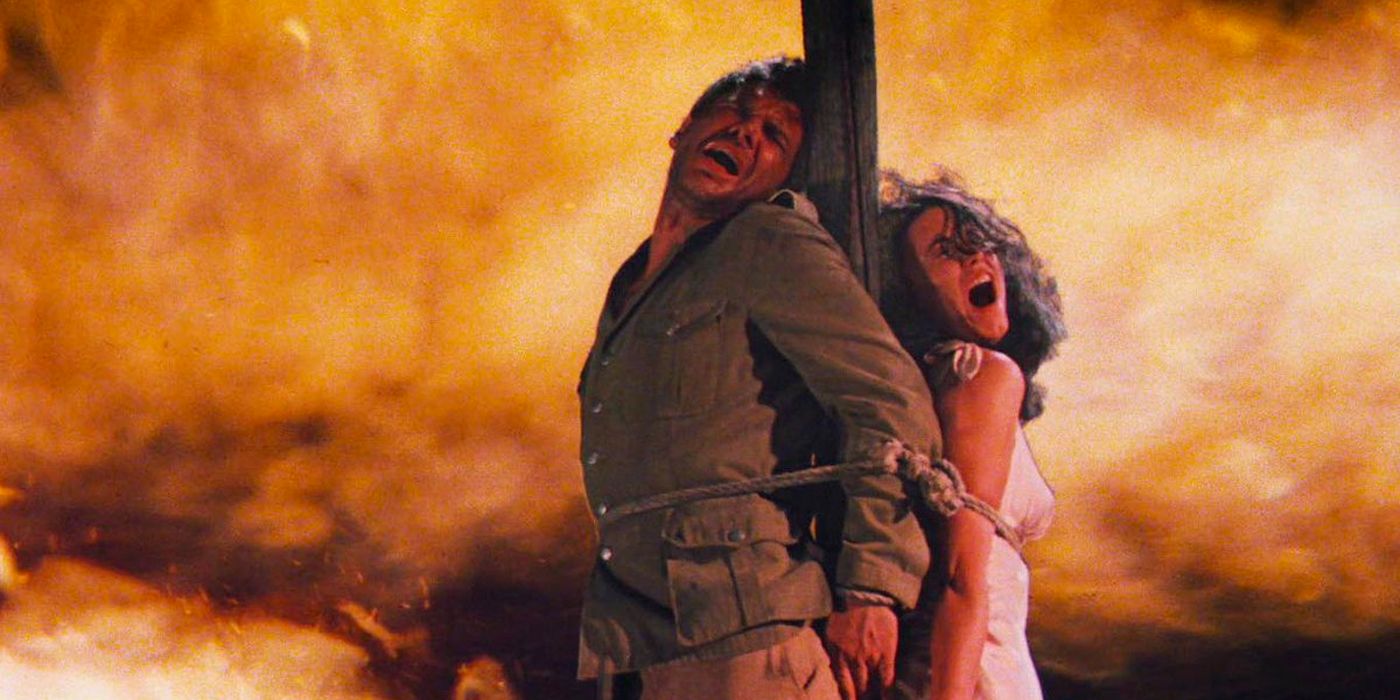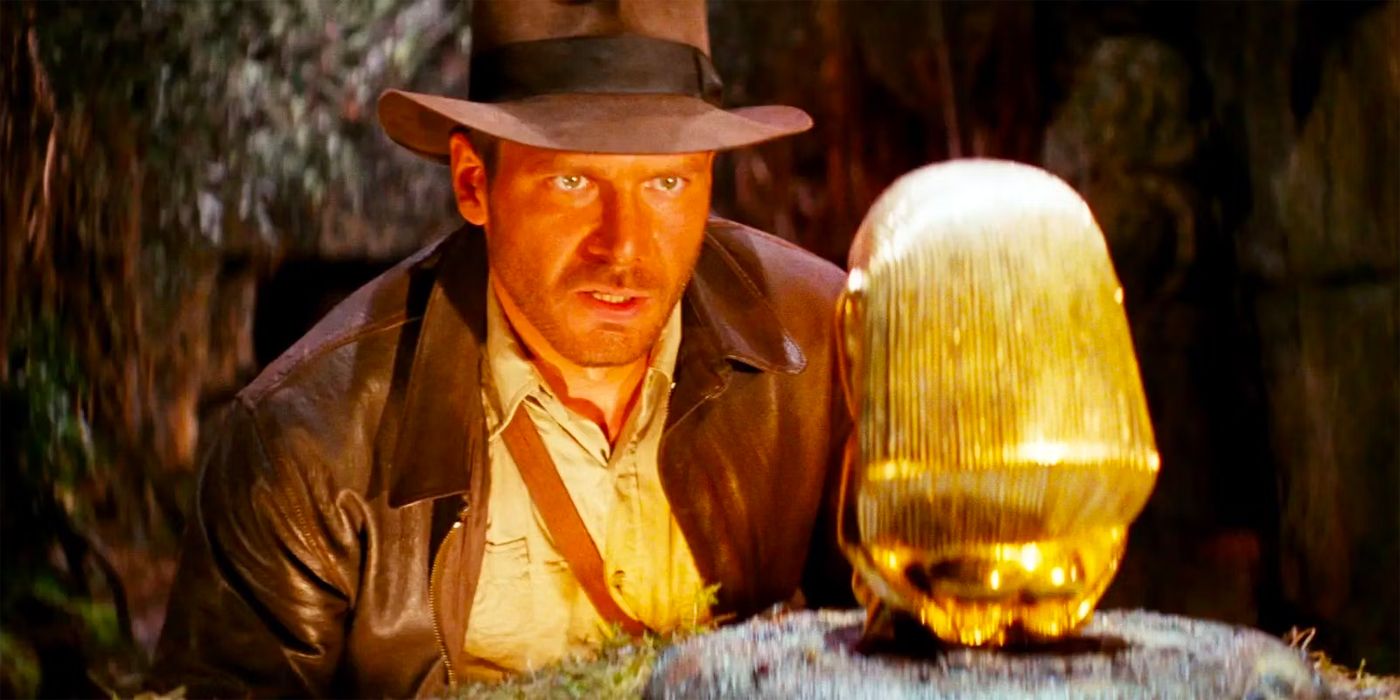Since its introduction to the world with 1981's Raiders of the Lost Ark, the name Indiana Jones has become synonymous with adventure. Decades later, after three big screen sequels (with yet another on the horizon), a television series, novelizations, comic books, video games, and even a long-running theme park attraction, this multimedia franchise has thrilled and captivated audiences around the globe for 42 years. Originally conceived and cultivated by George Lucas, the daredevil archeologist and his globetrotting exploits were born out of the filmmaker's love for serial films that ran in theaters throughout the early-to-mid 20th century.
According to the filmmaker, his idea for Indiana Jones actually preceded that of Star Wars and, as fate would have it, the franchise's journey to the screen officially took flight during a conversation in paradise between Lucas and fellow cinematic icon, Steven Spielberg.
Lucas' Inspiration for Indiana Jones
As a youngster growing up in Modesto, California, George Lucas reveled in the escapist adventures offered by theatrical Saturday afternoon serials. These short films, screened in a sequential, episodic format, featured a variety of swashbuckling heroes whose daring antics typically ended in cliffhangers. Taking inspiration from these cinematic gems, Lucas began concocting the idea of his own such hero, which would ultimately take the form of a university professor and archeologist consistently facing unrelenting foes. According to Lucas, "Practically every movie star of the '30s has one movie like this, be it Alan Ladd or Clark Gable or whoever — playing a soldier of fortune in a leather jacket and that kind of hat. That's a favorite period of mine, but it was more the character we were after than the period, although they're obviously both rooted in the same ground."
Lucas enlisted the aid of fellow filmmaker Philip Kaufman, who was responsible for introducing a crucial element to the proposed story. Kaufman suggested that the hero be in pursuit of the Ark of the Covenant, a supernatural notion that would become one of the future franchise's narrative and thematic hallmarks. But after collaborating for a time, Kaufman departed the project to write the screenplay for Clint Eastwood's The Outlaw Josey Wales, and Lucas pivoted to writing and directing Star Wars. It would be years before Lucas dusted off the idea for Indiana Jones and sought the creative participation of another filmmaker.
Kings of the Blockbuster Unite
In the late 1970s, the names Spielberg and Lucas had become household fixtures in the world of movies, with the former's Jaws and the latter's space opera taking audiences by storm. Having helmed the two highest-grossing films in history up to that point, and fostering a friendship that originated in the previous decade, it's no wonder that the filmmakers would eventually combine efforts on a project. While vacationing in Hawaii, which has since become a tradition between the two men, they casually discussed what was next on their respective directorial horizons. Spielberg divulged that he was attempting, yet again, to nab the directing job for the next James Bond adventure. According to Spielberg, Lucas quipped, "I have a better idea. It's called Raiders of the Lost Ark." In this seminal moment, a professional relationship between the filmmakers was put in place, and one of cinema's most fruitful collaborations was born.
Recruiting a Screenwriter and Securing a Budget
After ditching the franchise's original titular surname, Smith, in favor of Jones, Spielberg and Lucas set out to find a writer ready to put pen to paper. Having recently purchased a screenplay by the man who co-wrote The Empire Strikes Back and would go on to a prolific filmmaking career, Spielberg suggested to Lucas that Lawrence Kasdan take the screenwriting reins of Raiders. After receiving Lucas' approval, the trio spent three days outlining the film. According to Spielberg, Kasdan was instrumental in fleshing out the film's narrative and characters, and added "so much wit and humor. Larry brought in such a 1930s Preston Sturges meets Michael Curtiz. Indiana Jones was a little more like Humphrey Bogart from The Treasure of the Sierra Madre, and Larry layered it and flavored it and brought it to life.
With a satisfying screenplay in place, Lucas began pitching the script to major studios in Hollywood. Most of them balked at and passed on the proposal due to Raiders' seemingly "gargantuan" nature in terms of action, spectacle, and complicated set pieces. While Lucas was convinced the film could be made for $20 million, the majority of potential financiers disagreed, but ultimately Paramount Pictures took a chance and gave the filmmakers a green light for production. At the same time, Spielberg had developed a reputation for going over-budget and over-schedule, as was the case with his previous three films. This time in the director's chair, however, he vowed to keep a tight budget and efficient schedule, and has since claimed, "I think Raiders of the Lost Ark was probably the most prepared I've ever been in my career to direct a movie."
Casting the Film
It may be difficult or even impossible to imagine anyone other than Harrison Ford playing Indiana Jones, but the fact is the actor nearly missed out on the role of a lifetime. Spielberg suggested Ford to Lucas, whose response was, "He's been in two of my movies. I don't want him to be my Bobby DeNiro." After a promising screen test with Tom Selleck as Jones, the filmmaking duo pursued the actor for the titular role. As fate would have it, Robert Daly, who was then head of CBS, stopped Spielberg and Lucas dead in their tracks. Selleck had already committed to the television series Magnum, PI and, as a result, was contractually unable to accept the role of Indiana Jones.
But every crisis is an opportunity, and Spielberg saw a chance to once again go after his first choice. After Ford read Lawrence Kasdan's script and was "very enthused," he met with Spielberg for the first time and agreed to not only star in Raiders, but also in two sequels should Raiders be successful. Soon after Ford's signing on, Karen Allen was selected for the leading lady role of Marion Ravenwood. Filling out the film's cast as key supporting players were John Rhys-Davies (in a role originally offered to Danny DeVito), Denholm Elliott, and Paul Freeman among others. With a script and cast in place, Spielberg prepared to shoot the film at Elstree Studios in England, and on location in France, Tunisia, and Hawaii.
Spielberg and Lucas' Approach to Shooting
When cameras rolled in the summer of 1980, Raiders of the Lost Ark had a fast and efficient production despite its ambitious nature. Regarding his approach to shooting the film, Spielberg has stated, "I decided not to shoot for a masterpiece but to make a good movie that told George's story very well. Sure, I could have gone out and made this movie for $30 million instead of $20 million, in 100 days instead of 73. But it would have boiled down to the same ideas, the same characters, the same continuity of scenes." In order to stay on schedule and avoid budget overruns, the filmmaker and his crew worked at a breakneck pace. Lucas echoed Spielberg's sentiment: "Steve wasn't always going for 100 percent, sometimes he was going for 50 percent. But my theory is that a director as talented as Steve going at 50 percent is better than most people giving their all. When he goes at 100 percent it can get out of hand, which I think is true of a lot of directors. It's not how good a film you can make. It's how good a film you can make under the circumstances.''
Shooting at Elstree Studios
After beginning principal photography in La Rochelle, France, and employing a World War II-era German submarine also used in Wolfgang Petersen's war epic, Das Boot, production moved to Elstree Studios in England. Of all the film's sequences shot on sound stages, perhaps the most notable was that featuring the Well of the Souls, in which the Ark of the Covenant is discovered. Shooting on the same sound stage that had recently housed part of the Overlook Hotel for Stanley Kubrick's The Shining, Spielberg's sequence famously required thousands of live snakes. After initially procuring a hefty number from reptile handlers in Europe, it was quickly determined that the set was far too big to capture the wide angles Spielberg was looking for. The result was several thousand more slithery foes being brought to the sound stage.
Spielberg reflected on shooting the sequence in saying, "6,000 cobras, pythons, boa constrictors, grass and garter snakes were assembled for a two-week stint in the Well of Souls." The inclusion of cobras had the cast and crew on edge, and Spielberg recalled, "the antivenin we had on hand turned out to be two years outdated. We had to fly in special serum from India." In one of Raiders' iconic moments, when Indy falls to the ground and comes face-to-face with a hooded cobra, the filmmaking and wrangling teams took no chances. Ford remembered, "you can barely see a reflection on the sheet of glass that was between myself and the Cobra. They took some elaborate precautions on that occasion."
Shooting in Tunisia
After shooting at Elstree Studios, the company packed up and spent four-and-a-half weeks in the Tunisian desert (doubling for Egypt), which was anything but fun in the sun. With temperatures often reaching 130 degrees, the cast and crew faced an adversarial environment and frequent complications, not the least of which was rampant illness. Spielberg insisted on eating only canned food from the UK, while many of his colleagues "who ate at the restaurants or at the hotels, they all got sick." Actor John Rhys-Davies said of the experience, "I think I actually had cholera. I had a temperature of 105-point something. I was dying."
Ford would also succumb to illness while shooting in Tunisia. As it turns out, one of the film's most hilarious and beloved moments was born out of the actor's ailing health. Producer Frank Marshall recalled, “We were supposed to shoot this huge fight between the whip and the sword." Plans for the lengthy and complicated fight were interrupted, however, when Ford revealed that he wasn't feeling well. According to Marshall, “Somehow, somebody said, ‘I’ve got this gun, why don’t I just use it?' After lunch, we did three shots, and we were two days ahead of schedule, and it’s the biggest moment in the movie.” Such improvisation just goes to show how greatly creative spontaneity can benefit a film in unexpected ways.
The Stunts of 'Raiders'
Some of the highlights of the Indiana Jones franchise, particularly its first film, are the tremendously dangerous and undeniably impressive stunts. Without access to the digital tools so widely available to filmmakers in 2023, Spielberg and his colleagues relied on a number of stunt performers and practical effects for much of the film's thrilling action sequences.
Raiders' opening, giving audiences one of its most memorable moments as Indiana Jones is chased through a cave by a giant boulder, saw Harrison Ford do his own stunts. While the "boulder" was made from fiberglass, wood, and plaster, it was still a dangerous notion to have someone chased by it, let alone the star of the film. The risky endeavor went off without any complications or injuries, but Spielberg has since questioned the issue of safety in allowing Ford to perform the stunt. In an essay the filmmaker penned for American Cinematographer, he recalled, "There were five shots of the rock from five different angles — each one done separately, each one done twice — so Harrison had to race the rock ten times. He won ten times — and beat the odds. He was lucky — and I was an idiot for letting him try it."
At one point, during the film's Tunisian shoot, Ford wouldn't be so physically fortunate. While filming the fight sequence around the flying wing aircraft, largely made up on the spot and featuring a stuntman who would appear in two of Raiders' sequels, the lead actor had a run-in with one of the plane's wheels. Ford recalled, "I slipped and fell, and the wheels rode up onto my knee." Spielberg (sarcastically?) remembered of the incident, "What saved him was the fact that it was so hot, and the rubber of the airplane's tires was soft." The accident resulted in a torn ACL, but according to Ford, "Rather than submit to any local medical care, we just wrapped it up and put ice on it, carried on."
One of Raiders' quintessential action sequences is a chase through the desert. After leaping from his galloping horse onto a speeding truck (an image that served as one of Lucas' initial inspirations for the character), Indy battles a horde of Nazis before emerging victorious with the Ark. For the first time in his career, Spielberg assigned the majority of the sequence to a second unit that included revered stuntman Terry Leonard. Leonard was itching to pull off a particular stunt he'd previously been unable to, in which he got underneath a moving truck and made his way, hand over hand, from front to back. After the crew dug a trench in the road to give him some clearance, and with his trusted driver Glenn behind the wheel, Leonard succeeded in amazing fashion, providing what may be the film's most dangerous and impressive stunt.
Editing and Scoring 'Raiders'
After 73 days of filming, in four countries and on three continents, principal photography wrapped in September 1980. To edit the film, Spielberg enlisted Michael Kahn, who began work with the filmmaker on Close Encounters of the Third Kind and has since cut all his films. Kahn recalled that Spielberg, "shoots for the editing room. And I had a lot of footage. How you put it together really affects the audience psychologically." For his work on Raiders, Kahn would win his first of three Academy Awards.
Spielberg also sought the talents of another longtime collaborator in post-production. The incomparable John Williams, who scored Spielberg's four previous films, would once again take the reins in composing music for Raiders of the Lost Ark. According to the director, Williams initially presented him with two possible themes. Enthused about each of them, Spielberg suggested Williams combine the two, and one of cinema's most recognizable themes was born. The renowned composer nabbed an Oscar nomination (his 16th of 52 as of 2023) for his work on the film.
'Raiders' Becomes a Massive Hit
Released in 1,078 theaters on June 12, 1981, Raiders of the Lost Ark went on to become the highest-grossing film of the year and placed among the highest of all time when its initial theatrical run closed in March 1982. It's since been re-released several times and amassed a worldwide gross of $367 million. Raiders also has the rare distinction of being the most "leggy" film of all time, meaning it consistently performed well at the box office for a long period without ever reaching huge numbers at any given moment. In addition, it received eight Academy Award nominations including Best Picture, and scored five wins.
The film's unapologetic and gleeful spirit of thrills and excitement had a universal resonance with moviegoers. The character of Indiana Jones quickly became an iconic symbol of adventure, and it's safe to assume that for all his daring antics, audiences recognized and appreciated his all-too human vulnerabilities and flaws. With a new cog firmly placed in the wheel of pop culture, it wouldn't take long for work on another film to commence. In the summers of 1984, 1989, and 2008, three hugely successful sequels arrived in theaters and treated audiences to further adventures with the swashbuckling professor and archeologist. And as it turns out, viewers will have one more opportunity to see Ford don the leather jacket and fedora.
Reflecting on 'Raiders'
In retrospect, Spielberg, Lucas, Ford and others involved with the production of Raiders have nothing but fond memories regarding their experience in making the film. Ford recalled, "I thought when I first read the script that Indiana Jones was going to be fun to watch. I had great confidence in Steven as a filmmaker, but you still never know what the mood of the audience is going to be when it's released, so I was very pleased at the amount of success that we had."
Allen said of her first time seeing the film, "I was blown away by it when I saw it. I got it instantly. I saw what he was doing, and I saw the film that he was making. And I knew it was really good. I knew it was something people would respond to."
Speaking with reverence and gratitude for the film, Spielberg has stated, "I can't go back and look at a lot of my movies without punching holes in them. I have probably a handful of films that I've directed that I can watch objectively as if I didn't have anything to do with the movie. And Raiders is one of those films that I can look at with my kids, and divorce myself from all my knowledge and forget how it was made, and watch it from the point of view of an audience. That was the gift that Raiders gave back to me." Regarding the film's enduring legacy and lightning-in-a-bottle quality, Lucas has said, "It was one of those rare occasions where everything--the script came out better than we expected. The movie came out better than we expected. Everything sort of just came together and was brilliant."

